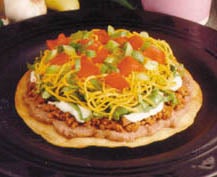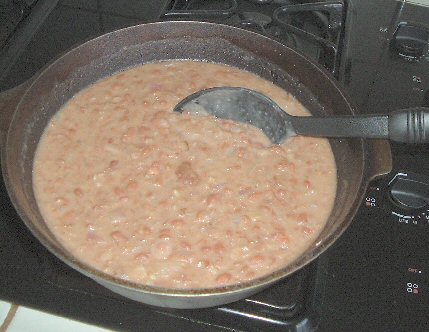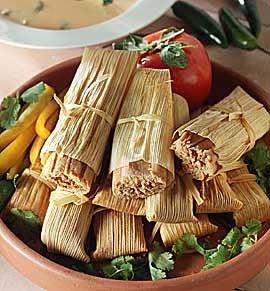
Eating a well- balanced diet is important for everyone; it is especially important for growing children. When a child develops a rheumatic disease, proper nutrition becomes critical. Like all children, your child should consume a well- balanced diet that includes a variety of foods. Meals should be planned using the U.S. Department of Agriculture's Food Guide Pyramid with serving sizes appropriate for age.
Click here to view this pyramid: for pdf of simplified side or pdf of detailed side.
Traditionally the staple foods for the Mexican-American family are beans, tortillas, rice and cooked vegetables with occasional animal fat. Such a diet is relatively high in calories and low in protein (8).
Extra weight puts stress on the joints, heart and lungs. Children who have become overweight during childhood have a high risk of being overweight as adults. The most common reason for children with rheumatic disease to be overweight is that they are on steroid therapy. Extra weight puts extra stress on joints.
If your child has already gained too much weight, it is important to prevent further weight gain and try to help him/ her lose weight. Weight loss is not an easy matter for anyone. Here are the Golden Rules of weight loss:
Limit fat intake
Consume low-calorie foods
Limit the quantity of foods eaten
Get plenty of exercise
It is especially important to reduce fat intake. One way to do this is to reduce the fat used in food preparation. You can decrease fat by baking , boiling or broiling instead of frying. Saute with nonstick pans and vegetable oil spray. Lower- fat alternatives can be used for ingredients that are high in fat. Substitute skim milk for whole, whole milk for cream and nonfat yogurt for sour cream. Nonfat yogurt can be substituted for fat in many baking recipes; just substitute nonfat yogurt in a quantity equal to half the total volume of oil, eggs and butter.
Increasing physical activity is an important component of a weight management program. You can help promote a lifestyle that has leisure- time activities, limited time spent watching television, and increased physical activity. Some children who have gained significant weight can also participate in diet programs. Consider these Weight Watchers recommendations for children.
Here are some more helpful tips you can keep in mind to help your child follow a low-fat, low-calorie diet successfully (13):
- Minimize the amount of high- fat red meat you serve. You can decide to use poultry, fish or pasta with fresh vegetables sauces instead.
- Limit serving fatty foods such as hamburgers, hot dogs, french fries, sausages, cold cuts and salads made with mayonnaise.
- Avoid as much as you can, foods that are deep- fried and prepared in sauces and gravies.
- Serve smaller portions and discourage your child not to take second servings.
- Encourage your child to drink a lot of water with meals.
- Substitute low-fat, low-calorie snacks for their snack products. Good choices include fresh fruit, sugar- free Jell-O, fresh vegetables with low calorie dip if needed, plain popcorn and pretzels. Low fat does not necessarily mean low-calorie. Low fat cookies can contain as many calories as their higher fat counterparts.
- Avoid high-calorie drinks like regular soda. Encourage low calorie juices and lemonade instead. Serve skim or low-fat milk if your child is over 1 year of age.
- Plan meals and snacks together with your child. Encourage your child to wait 20 minutes if he/she wants to eat shortly after a meal or a snack. He/she may soon feel fuller or become involved in an activity that distracts him/her from wanting to eat.
- Cookies, candy and ice cream are high in calories and should be used only for special treats on rare occasions.
There are no known dietary supplements or dietary restrictions that have been proved to be effective in treating the childhood rheumatic diseases. A daily multi-vitamin and mineral supplement may be appropriate for children who do not consume a well-balanced diet. It is helpful to provide Calcium and Iron in the diet of your child with JRA.
Calcium is important to keep bones and muscles strong. There are several steps you can take as a parent to make sure that your child is getting enough calcium. He should be eating at least three servings a day of calcium rich foods, including milk, cheese, yogurt, orange juice with added calcium and other dairy products. Good sources of calcium are baked beans and refried beans when you serve tostadas, broccoli, dark green leafy vegetables and almonds.
Children with rheumatic disease often have a low red blood cell count called anemia. Although iron- rich food sources cannot completely treat anemia in children with JRA, an adequate intake of iron is recommended. Iron- rich food sources include meat, red beans, beans (baked or refried), cereals, nuts, peanut butter, eggs and dark green leafy vegetables.


